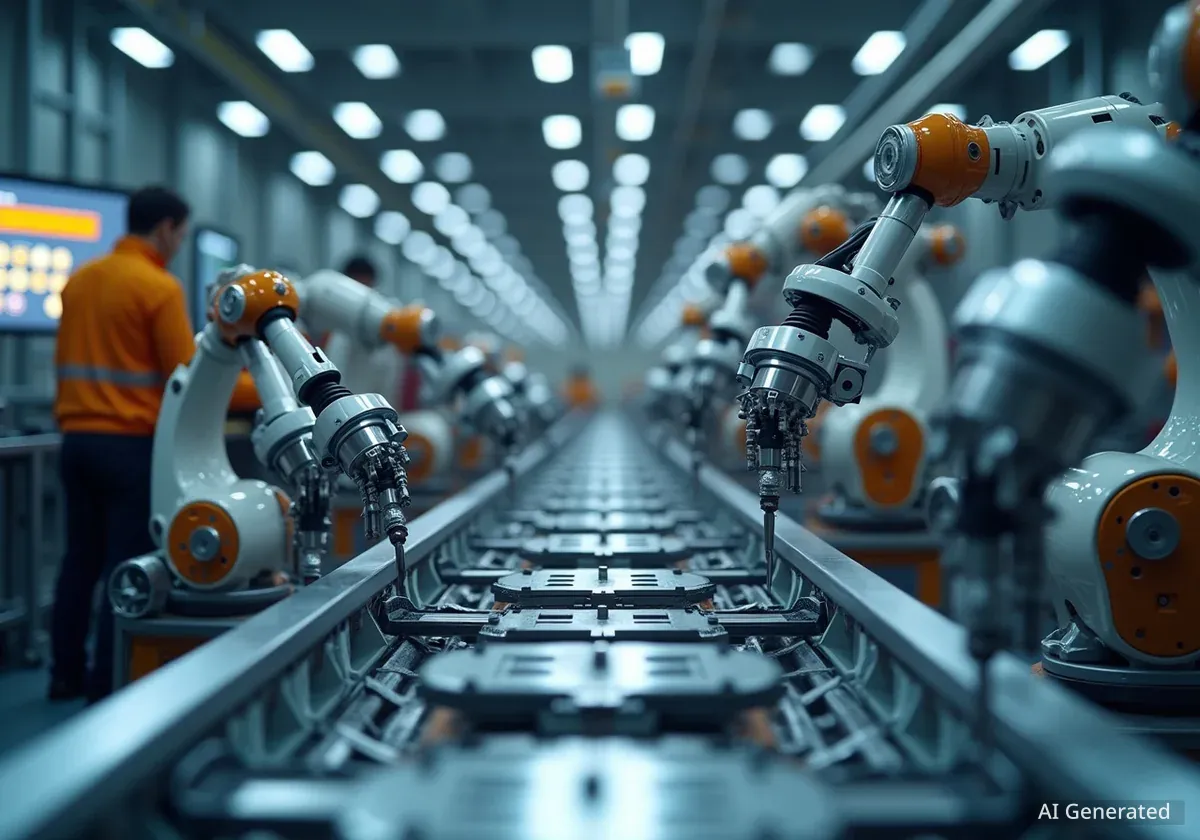A significant Amazon Web Services (AWS) outage on Monday disrupted major online platforms and services for over 15 hours, sparking debate about the company's recent workforce reductions and its increasing reliance on artificial intelligence. The widespread failure, which affected everything from ChatGPT to smart home devices, has drawn scrutiny from industry experts who question if the loss of experienced engineers contributed to the lengthy recovery time.
The incident began in the early hours of Monday morning, with initial reports of problems surfacing at 3:11 AM EST. While Amazon's dashboard indicated the primary issue was resolved within three hours, full restoration of all services was not confirmed until 6:53 PM EST, resulting in a disruption that lasted the better part of a business day and is estimated to have caused billions in lost productivity for dependent companies.
Key Takeaways
- A major AWS outage on Monday caused widespread internet disruptions for more than 15 hours.
- The failure was attributed to a Domain Name System (DNS) resolution issue.
- The event occurred months after AWS implemented significant job cuts, some of which were linked to the adoption of generative AI.
- Experts suggest the loss of experienced engineers, or "tribal knowledge," may have prolonged the recovery process.
A Cascade of Failures
The technical cause of the outage was identified as a Domain Name System (DNS) resolution issue. DNS acts as the internet's directory, translating human-readable web addresses like "Amazon.com" into the numerical IP addresses that computers use to communicate. When this system fails, it's as if all the listings in the phone book suddenly become incorrect, preventing services from connecting with each other and with users.
The impact was immediate and far-reaching. Amazon's own e-commerce site and Ring security cameras went offline. Popular services that rely on AWS infrastructure, including Snapchat, Fortnite, and numerous banking applications, also experienced significant downtime. The outage demonstrated the critical role AWS plays in the digital economy, where a single point of failure within its network can trigger a domino effect across thousands of businesses.
Timeline of the Outage
- 3:11 AM EST: First issues related to the crash were reported.
- Approx. 6:11 AM EST: The AWS dashboard stated the underlying issue had been "fully mitigated."
- 6:53 PM EST: Amazon announced all services had returned to "normal operations."
- Total Disruption: Over 15 hours from first report to full resolution.
Layoffs and the Rise of AI
The timing of this significant failure has put a spotlight on Amazon's recent strategic decisions. Just months ago, in July, the cloud computing division reduced its workforce by at least hundreds of positions. This move followed statements from CEO Andy Jassy about the transformative potential of generative AI on the company's operations.
In a June note to employees, Jassy suggested that AI would change how work is done. He stated, "We will need fewer people doing some of the jobs that are being done today, and more people doing other types of jobs." While the specific roles affected by the layoffs remain unclear, the tech industry has seen a broader trend of targeting technical positions for replacement or augmentation by AI coding assistants.
AI in Software Development
Major technology companies are increasingly integrating AI into their coding workflows. Google CEO Sundar Pichai has stated that 25% of his company's new code is written with AI assistance. Similarly, Microsoft CEO Satya Nadella claims that figure is nearly one-third at his company. The goal is to accelerate development, but some studies suggest that relying on AI can slow down complex programming tasks and may not replace the nuanced understanding of experienced human developers.
The Value of Human Experience
The prolonged nature of the AWS recovery has led some analysts to question whether the recent layoffs have resulted in a critical loss of institutional knowledge. Complex, large-scale systems like AWS often have undocumented quirks and interdependencies that are only understood by veteran engineers who have managed them through previous incidents.
Corey Quinn, a cloud computing expert and author of the "Last Week in AWS" newsletter, commented on the situation for The Register, suggesting a lack of seasoned expertise was evident.
"They legitimately did not know what was breaking for a patently absurd length of time," Quinn wrote. He argued that while new talent can understand the technical theory of DNS, they lack the specific, hard-won experience of dealing with the system's unique history.
Quinn emphasized the importance of what he called "tribal knowledge"—the collective wisdom of a team that knows the system's history and hidden complexities.
"You can’t hire for is the person who remembers that when DNS starts getting wonky, check that seemingly unrelated system in the corner, because it has historically played a contributing role to some outages of yesteryear," he explained. "When that tribal knowledge departs, you’re left having to reinvent an awful lot of in-house expertise."
As companies like Amazon continue to integrate AI into core operations while simultaneously restructuring their workforce, this outage serves as a critical case study. The incident raises important questions about the balance between automated efficiency and the irreplaceable value of human experience, especially when billions of dollars and the stability of the digital world are at stake. The full impact of replacing seasoned engineers with AI tools may not be apparent in day-to-day operations, but as Monday's events suggest, it can become starkly clear during a crisis.





